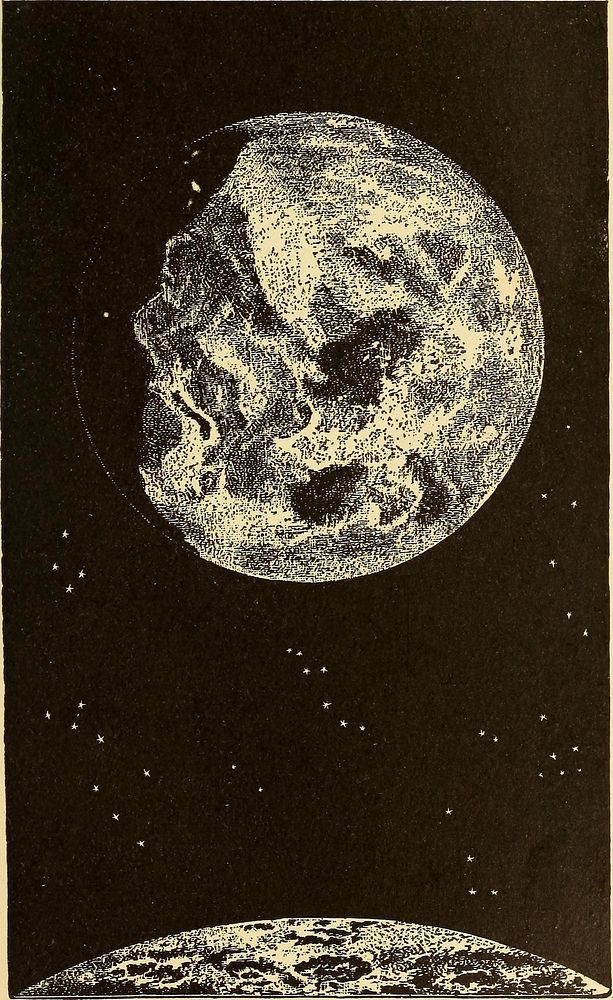https://creativecommons.org/publicdomain/zero/1.0/https://www.rawpixel.com/image/9975523

Identifier: storyofsunmoonst00gibe (find matches)Title: The story of the sun, moon, and starsYear: 1898 (1890s)Authors: Giberne, Agnes, 1845- (from old catalog)Subjects: AstronomyPublisher: Cincinnati, National book companyContributing Library: The Library of CongressDigitizing Sponsor: The Library of CongressView Book Page: Book ViewerAbout This Book: Catalog EntryView All Images: All Images From BookClick here to view book online to see this illustration in context in a browseable online version of this book.Text Appearing Before Image:s place with marvelousquickness. A deadly chill creeps over all around. Awhole fortnight of earth-time must pass before thesuns rays will again touch this spot. Verily the con-trasts of climate in the moon, during the twelve longdays and nights which make up her year, are startlingto human notions. But though the sun is gone we are not in darkness.The stars shine with dazzling brightness, and the hugebody of the earth, always seeming to hang motionlessat one fixed point in the sky, gives brilliant light,though at present only half her face is lit up and halfis in shadow. Still her shape is plainly to be seen,for she has ever round her a ring of light, caused bythe gathered shining of stars as they pass behind herthick atmosphere. She covers a space on the skymore than a dozen times as large as that covered bythe full moon in our sky. It would be worth while to stay here and watch thehalf-earth grow into magnificent full-earth. But thecold is becoming fearful—too intense for even theText Appearing After Image:THE EARTH AS SEEN FROM THE MOON, 7i 72 STORY OF THE SUN, MOON, AND STARS. imagination to endure longer. What must be the stateof things on the other side of the moon, where thereis no bright earth-light to take the place of the sunsshining, during the long two weeks night of awfulchill and darkness? It seems probable that a building on the moonwould remain for century after century just as it wasleft by the builders. There need be no glass in thewindows, for there is no wind and no rain to keepout. There need not be fireplaces in the rooms, forfuel can not burn without air. Dwellers in a city inthe moon would find that no dust can rise, no odorsbe perceived, no sounds be heard. Man is a creatureadapted for life in circumstances which are very nar-rowly limited. A few degrees of temperature, moreor less; a slight variation in the composition of air,the precise suitability of food, make all the differencebetween health and sickness, between life and death.Looking beyond the moon, into tNote About ImagesPlease note that these images are extracted from scanned page images that may have been digitally enhanced for readability - coloration and appearance of these illustrations may not perfectly resemble the original work.
Original public domain image from Wikimedia Commons
Public DomainFree CC0 image for Personal and Business use